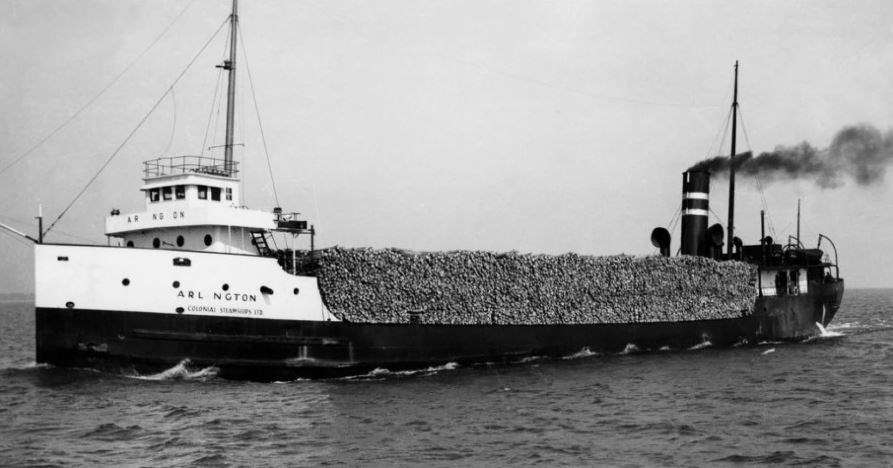WHITEFISH POINT, MICHIGAN — The actions of its captain remain a mystery, but the remains of the ship with which he went down in Lake Superior in 1940 have been discovered in deep water north of the Keweenaw Peninsula.
The 244-foot bulk carrier Arlington, carrying a cargo of wheat from Port Arthur to Collingwood, Ont., sank on May 1, 1940, during a violent storm.
On Monday, the Great Lakes Shipwreck Historical Society and shipwreck researcher Dan Fountain announced they had located the wreckage in over 600 feet of water, 55 kilometres offshore.
Built by the Detroit Shipbuilding Company just before World War One, Arlington was captained by Frederick Burke, described by GLSHS as a seasoned veteran of the Great Lakes.
As it set out on what would be its ultimate voyage on April 30, 1940, it was accompanied by a larger freighter, Collingwood.
Both ships encountered thick fog, followed by severe weather when day turned to night, and Arlington began to take on water.
This prompted the first mate to order a course that hugged the Canadian shore, but Captain Burke inexplicably reversed the order and put it back on course across the open lake.
At 4:30 a.m. on May 1, with Arlington beginning to sink, the crew of 24 abandoned ship in the absence of orders to do so from the captain.
They made it safely aboard Collingwood, but Burke was last seen near the pilothouse, reportedly waving at Collingwood just minutes before Arlington disappeared beneath the surface.
According to author R. Patrick Smith's book Steamboats, Sawlogs and Salvage: The story of Burke Family and their Near Relatives, when Arlington was loaded there was only 3.5 feet between the waterline and the deck level, leaving it in peril of being swamped in rough water.
Smith points out that the tragedy would have been much worse had Collingwood not been so close by.
Although smaller, Arlington had direction-finding equipment, which is why the other ship trailed it out of Thunder Bay.
GLSHS executive director Bruce Lynn credits teamwork for the discovery of the wreck.
He said Fountain, who spotted an anomaly while studying remote sensing data in a search for shipwrecks, approached the society for help, which led to a joint operation over the site last year using side-scan sonar.
That was followed by the deployment of a remotely-operated underwater vehicle that positively identified the submerged hull.
"It's exciting to solve just one more of Lake Superior's many mysteries, finding Arlington so far out in the lake," Fountain said.
"I hope this final chapter in her story can provide some measure of closure to the family of Captain Burke."
